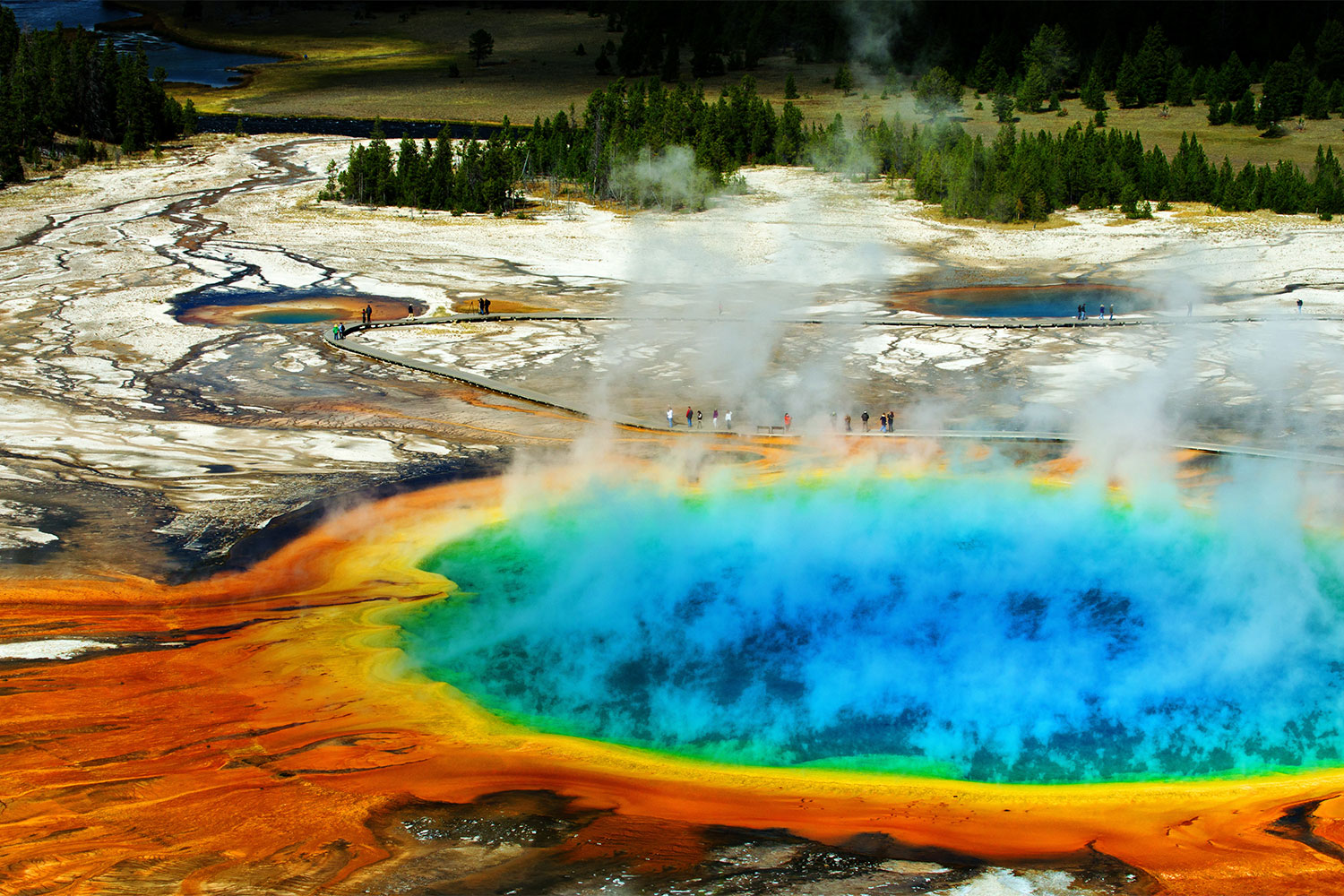
Yellowstone National Park offers breathtaking landscapes, diverse wildlife, and unique geothermal features—perfect for this year’s summer trip. While each season brings its own charm to this iconic park, June stands out as an ideal time to visit. As we transition to summer, Yellowstone comes alive with vibrant wildlife and milder weather, making it the perfect month for an unforgettable adventure.
When is peak season at Yellowstone National Park?

The peak season at Yellowstone National Park typically runs from the end of April through mid-September. This period offers the best opportunities for wildlife viewing, hiking, and other outdoor activities. However, it’s also when the park is most crowded due to the pleasant weather, so early planning and reservations are highly recommended.
Best times to visit Yellowstone
If you’re looking to avoid the crowds and still see some amazing sights, plan to visit Yellowstone National Park during these months:
June
While June marks the beginning of the peak tourist season at Yellowstone, it is still less crowded than July and August. Visiting in June allows you to enjoy the park’s attractions with fewer people around, providing a more serene and immersive experience. This is when Yellowstone is at its greenest. Early mornings and late afternoons are particularly peaceful, offering the chance to explore popular sites like Old Faithful and Mammoth Hot Springs with minimal crowds.
September
Visiting Yellowstone in September can be a fantastic experience for several reasons. After Labor Day, the number of visitors decreases significantly, providing a more peaceful and enjoyable experience. September also offers mild and comfortable weather, with cooler temperatures that are perfect for outdoor activities. The changing colors of the leaves create stunning landscapes and excellent photo opportunities.
Most park services and facilities are still open, but with fewer crowds, you can enjoy them more freely. Additionally, September often has clear skies, providing excellent conditions for stargazing.
October
Since it’s the end of the season, October sees the least amount of visitors, providing a serene atmosphere for your exploration. The Fall foliage is often at its peak during this time, which creates stunning backdrops for wildlife photography. Park facilities are still open in early October, and while there might not be as many activities, you can still hike, camp, and view wildlife as they prepare for winter. Just make sure you bring warm clothes!
June, September, and October each offering its own unique advantages when visiting Yellowstone National Park. The combination of pleasant weather, lush landscapes, abundant wildlife, and optimal conditions for outdoor activities makes them the perfect months to experience the park’s natural wonders. Whether you’re a seasoned explorer or a first-time visitor, Yellowstone promises unforgettable memories and a deep connection with nature. For more information about passes, be sure to visit the National Park Service.



